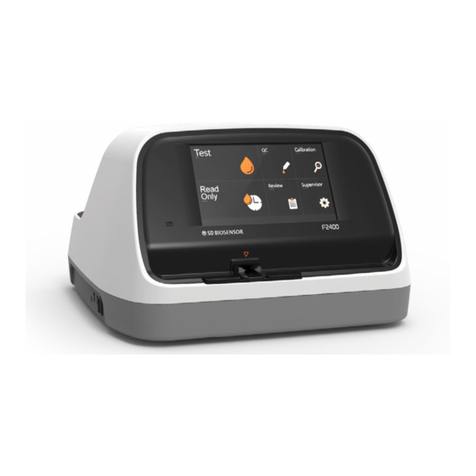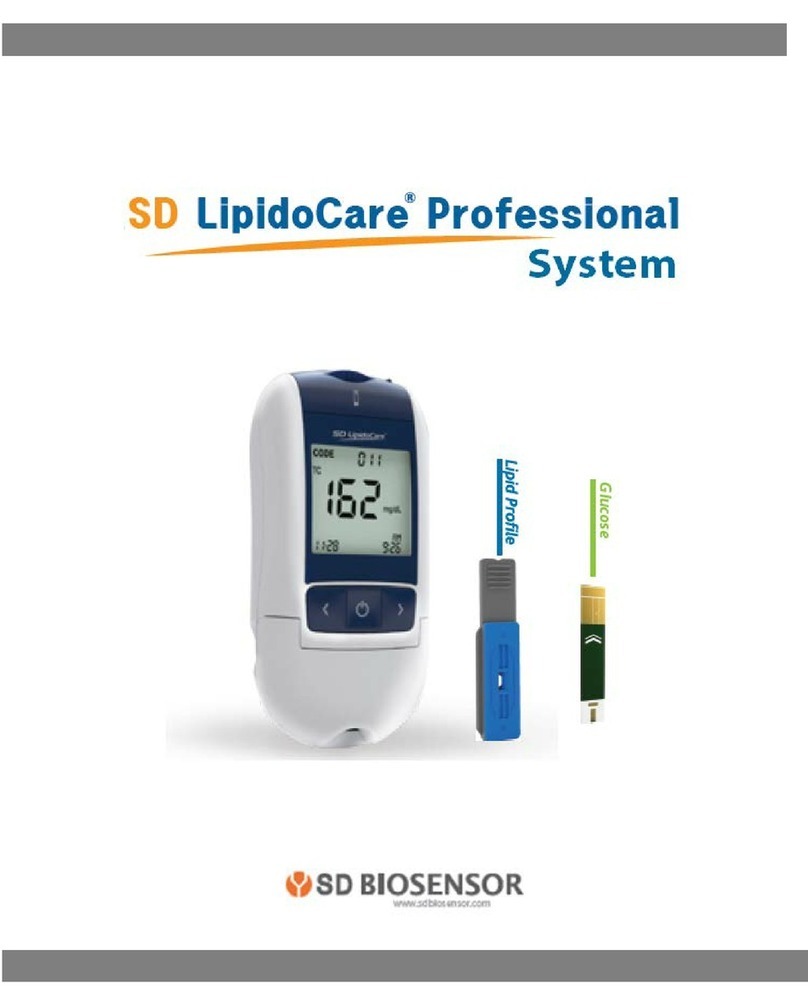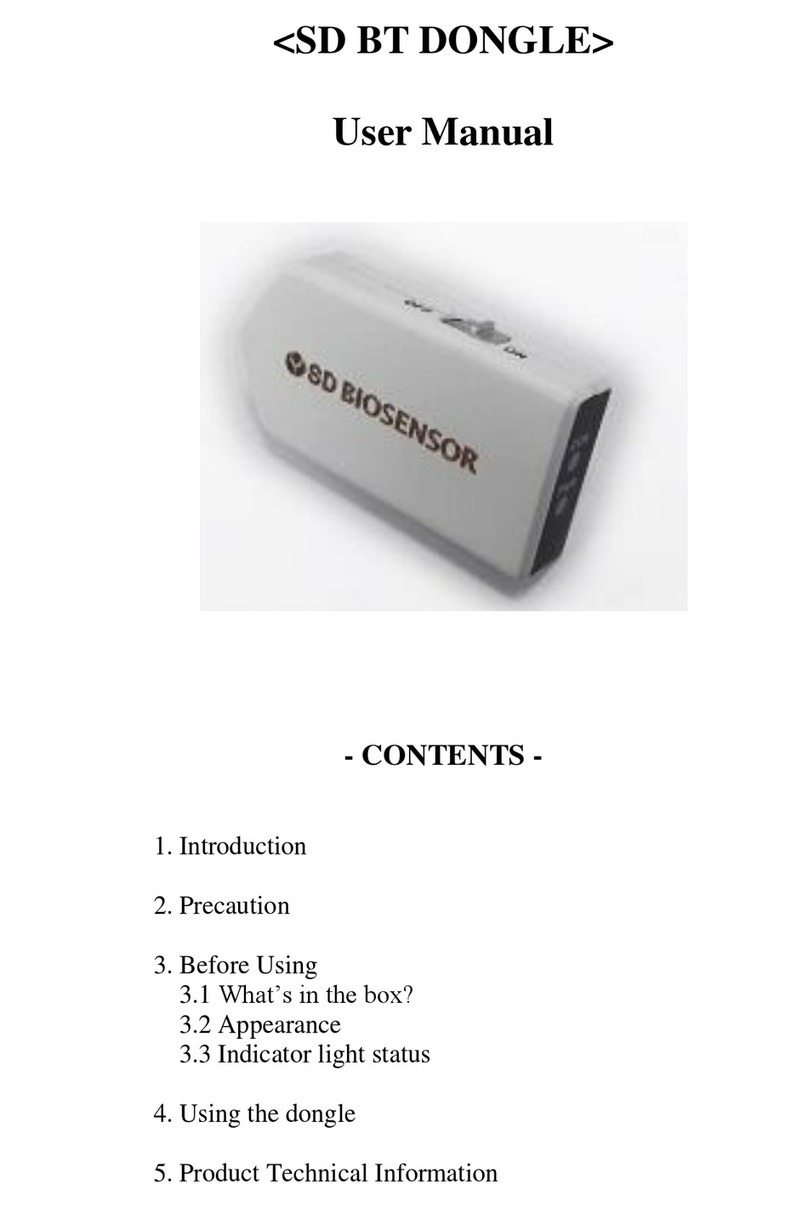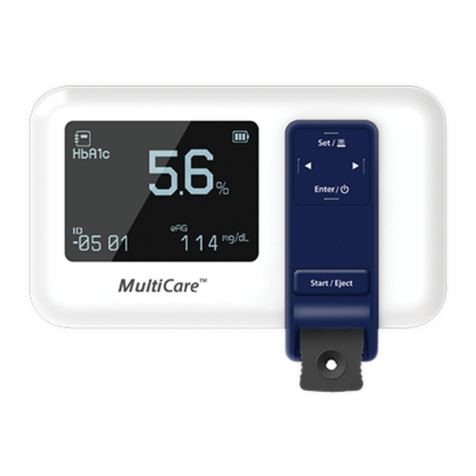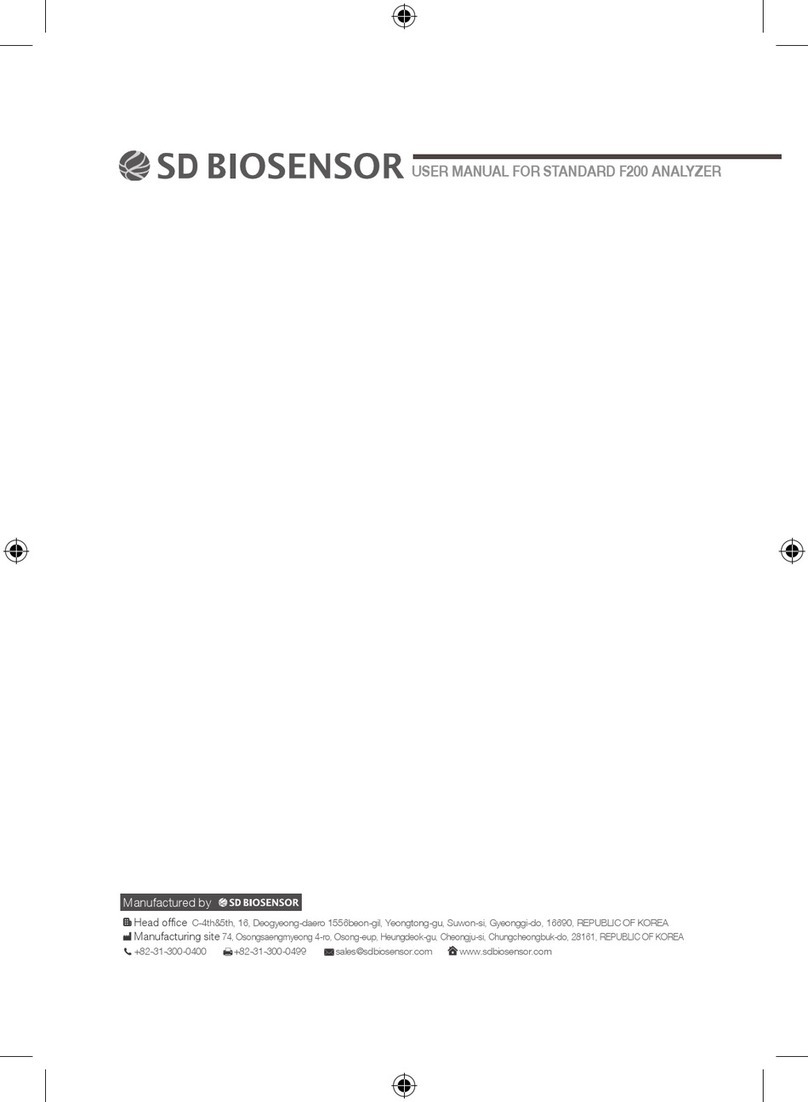
4
TABLE OF CONTENTS
CHAPTER 01. General Information ............................................................... 6
Main Menu Structure...............................................................................6
Symbol .....................................................................................................7
Brief Precautions and Limitations...........................................................8
CHAPTER 02. Introduction ............................................................................. 9
Intended Use: Purpose of the Analyzer..................................................9
Product Description.................................................................................9
Before You Start Testing..........................................................................9
System Components.............................................................................10
STANDARD F100 Analyzer ...................................................................10
STANDARD F100 Display .....................................................................12
Power Supply.........................................................................................13
CHAPTER 03. Setting and Performing ....................................................... 14
Operating the Analyzer..........................................................................14
Set the Analyzer.....................................................................................15
Performing a Measurement...................................................................30
Standard Test and Read Only Modes ..................................................31
CHAPTER 04. Using the Analyzer Memory and Data Transfer............... 33
Displaying Stored Measured Values.....................................................33
Delete Memory ......................................................................................33
Printing ...................................................................................................33
Data Transfer .........................................................................................34
CHAPTER 05. Calibration Set Test .............................................................. 35
Calibration Set Test................................................................................35
How to Use the Calibration Set ............................................................35
CHAPTER 06. Shut down, Cleaning and Maintenance............................ 37
Shut Down .............................................................................................37
Cleaning your Analyzer..........................................................................37
Maintenance and Transportation ..........................................................37












